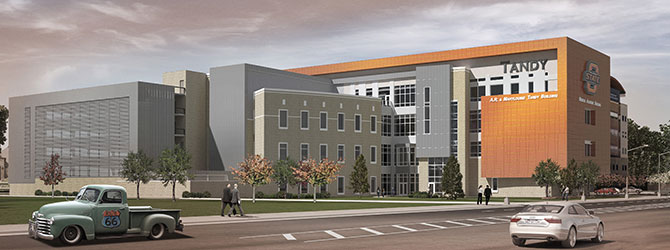Two current projects for Oklahoma State University (OSU) have presented a unique opportunity for us at Dewberry: the ability to combine our architectural experience in both technologically advanced healthcare facilities as well as state-of-the-art higher education buildings. Having designed a number of hospitals around the country for Cancer Treatment Centers of America, for example, we have worked with medical staff, patients, and administrators to create modern diagnostic and treatment facilities that put patients and their families first, incorporating cutting-edge technology and the latest concepts in patient-centered care.
But patients aren't served without highly trained healthcare professionals to take care of them, and in many communities across the U.S., healthcare workers are in short supply. Projections point to more severe shortages in the future. With a growing population and aging baby boomers, the U.S. faces a shortage of 250,000 public health workers by 2020, according to the Association of Schools of Public Health.
Tandy Medical Academic Building
OSU is addressing that need now, with new healthcare education buildings on the university's Tulsa and Oklahoma City campuses. In Tulsa, the new Tandy Medical Academic Building will include classrooms and a lecture hall as well as a hospital simulation lab with an emergency room, operating room, intensive care unit, birthing suite, clinical skills lab, osteopathic manipulative medicine lab, and an ambulance bay. The 84,000-square-foot building will strengthen OSU's Center for Health Sciences through enhanced programs for medical training as well as continuing education for physicians from throughout the state.

Allied Health Building
In Oklahoma City, where the city's northwestern communities are currently underserved, OSU's new 45,000-square-foot Allied Health Building accommodates health science classes as well as a Variety Care primary medical care office. In addition to classroom education, students benefit from hands-on training in the building's laboratories, including spaces for dietetics and simulation spaces for surgery and intensive care. Students are also be able to learn in the street-level clinic, which provides medical, dental, and behavioral health services to the public.

The Allied Health Building is now open, and the Tandy Medical Academic Building will open in summer 2017 in time for the fall semester. These important buildings will help the state of Oklahoma continue to serve its residents with high-quality healthcare, and proactively address the predicted shortages in trained workers.